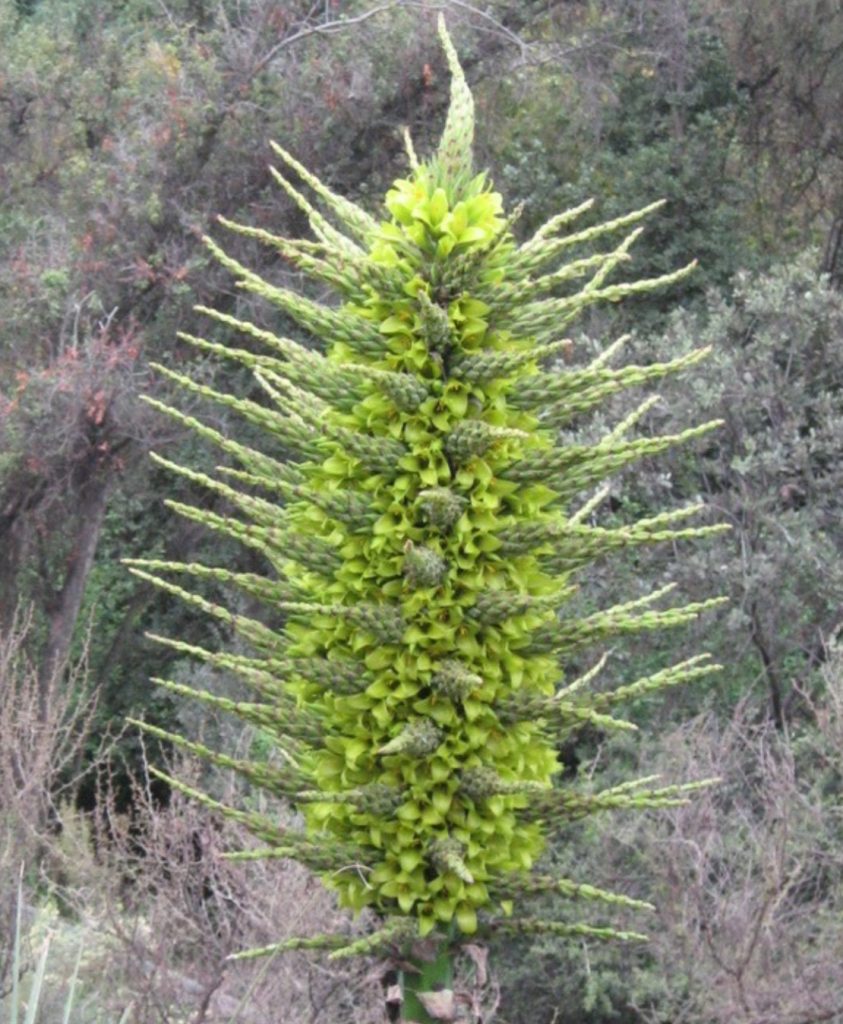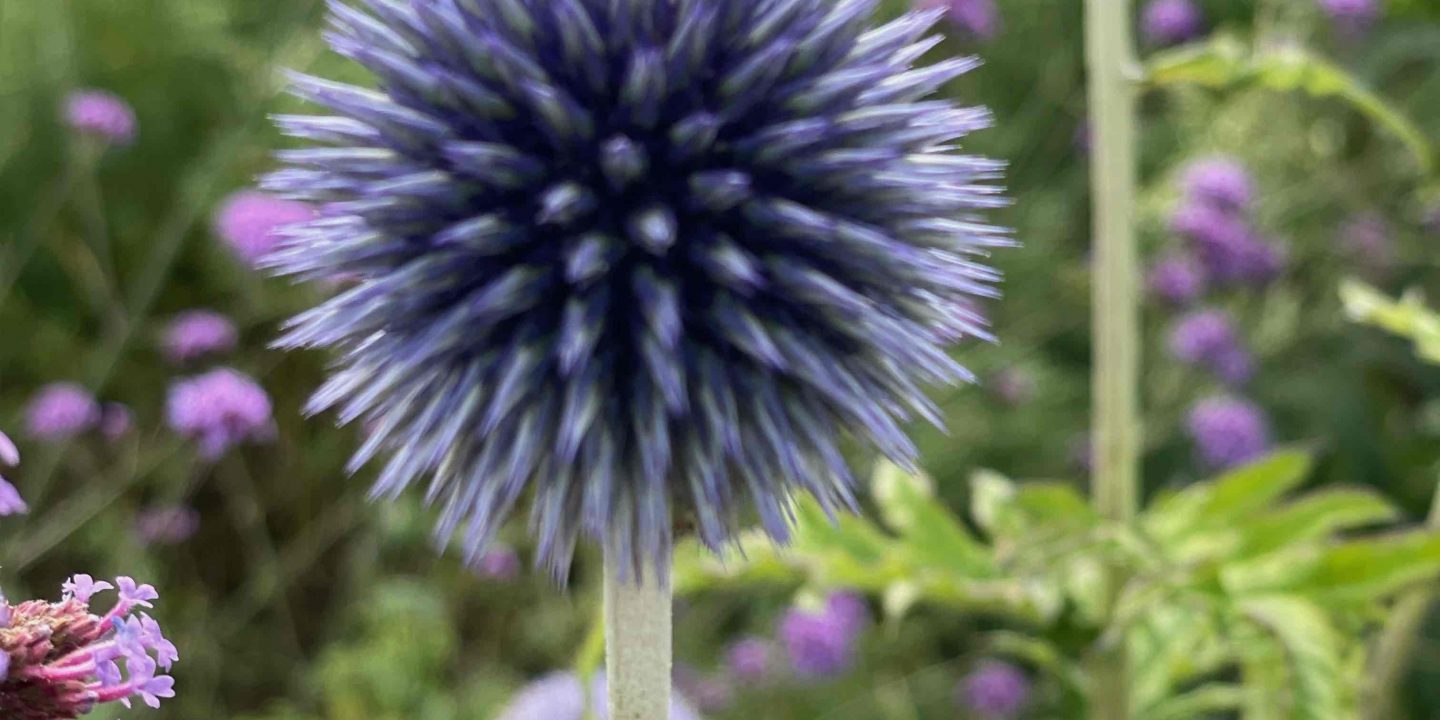Thistley Things
With so many very thorny political debates around us, my thoughts turned to prickly plants and flowers (this sounds like a ‘Thought for the day’ link!). Many of these do well in our stony soil and are at their thistley best in July.
True Thistles and their relatives
True thistles are considered to be members of the Cardueae tribe within the Asteraceae – the daisy family. All of them are highly desirable to bees and other pollinators.
I grow two cultivars of Cynara cardunculus – the Cardoon and the Globe Artichoke. Both are much less spiny that their native form, thankfully, but still have the look of a thistle of grand stature. The Cardoon has edible stems just below the flower head but why anyone would bother, I don’t know. They are fantastic giants for the back of the border with lovely silver foliage and giant purple thistle flowers at head height. The equally beautiful Globe Artichoke is grown in the kitchen garden and the large buds boiled, dismembered and eaten with butter and lemon and great relish.
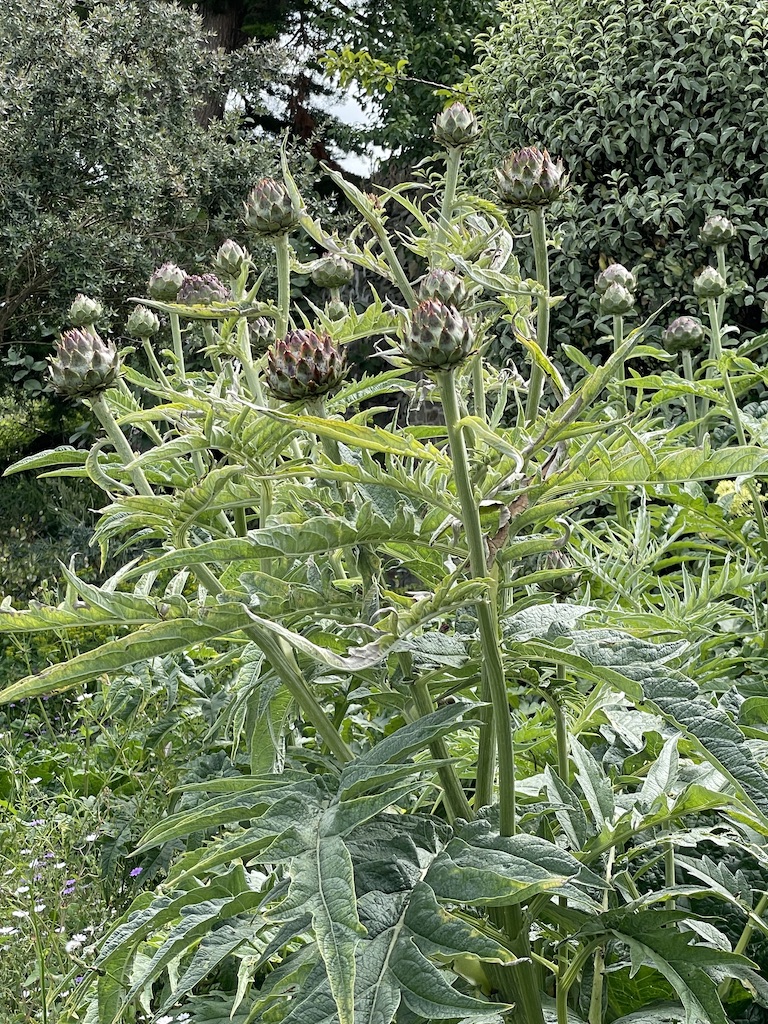
Another giant of the Silver Border is Onopordum acanthium, growing 1.8m high with intense white/silver leaves and stems and purple thistle flowers. It’s a biennial that forms a large rosette one year and shoots up to flower in the next. It self-seeds and doesn’t move easily so it chooses its own location. Love it wherever it lands.
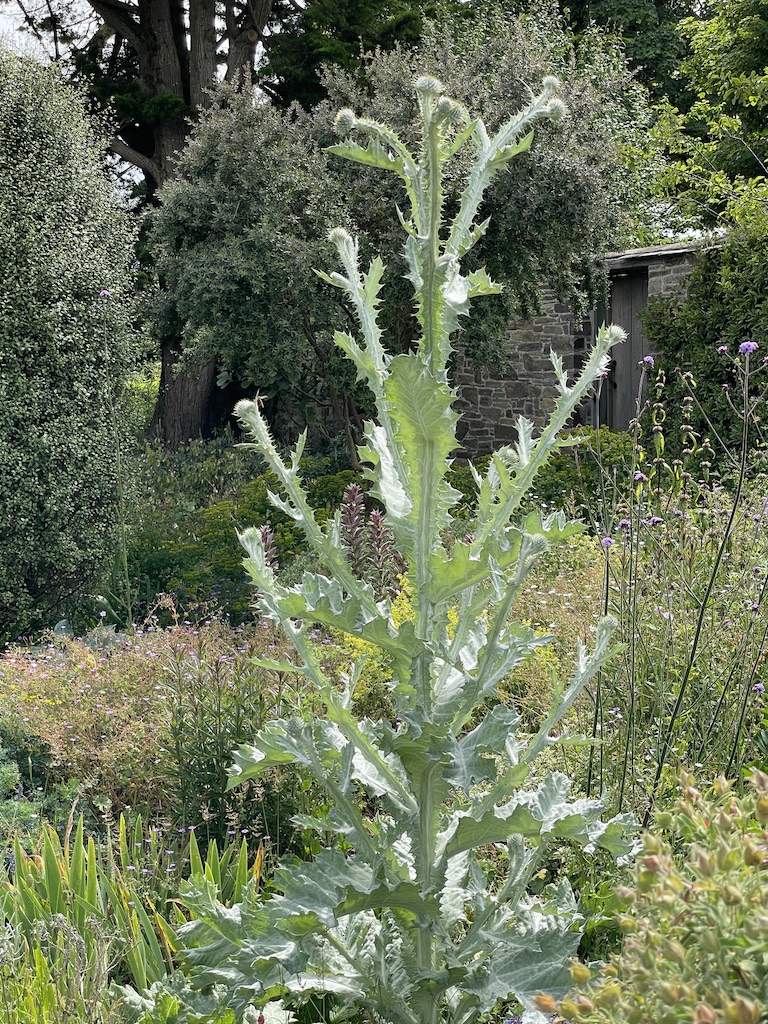
Echinops
The Globe thistles are also members of the daisy family. I grow two species at Crugsillick.
Echinops bannaticus grows 1.2m high with spiny grey foliage and spiky balls of steel blue flowers through July and August. It self-seeds freely in poor well-drained soil.
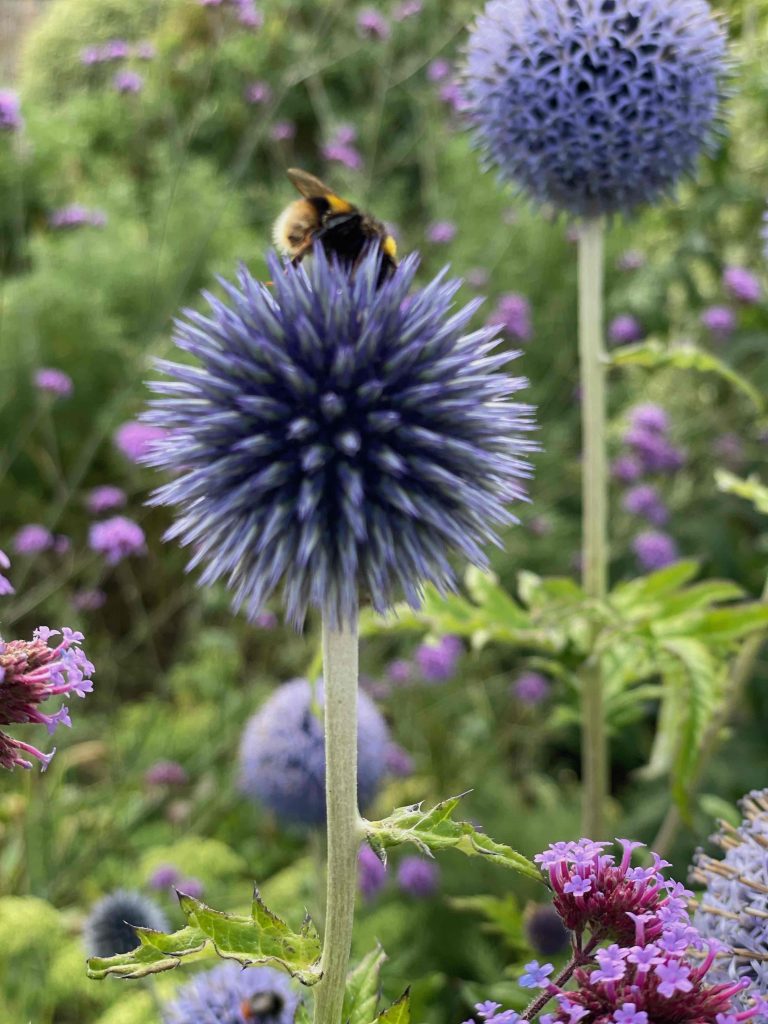
Echinops ritro is similar but smaller with finer foliage. The variety Veitch’s Blue has indigo buds that open a lovely clear blue.
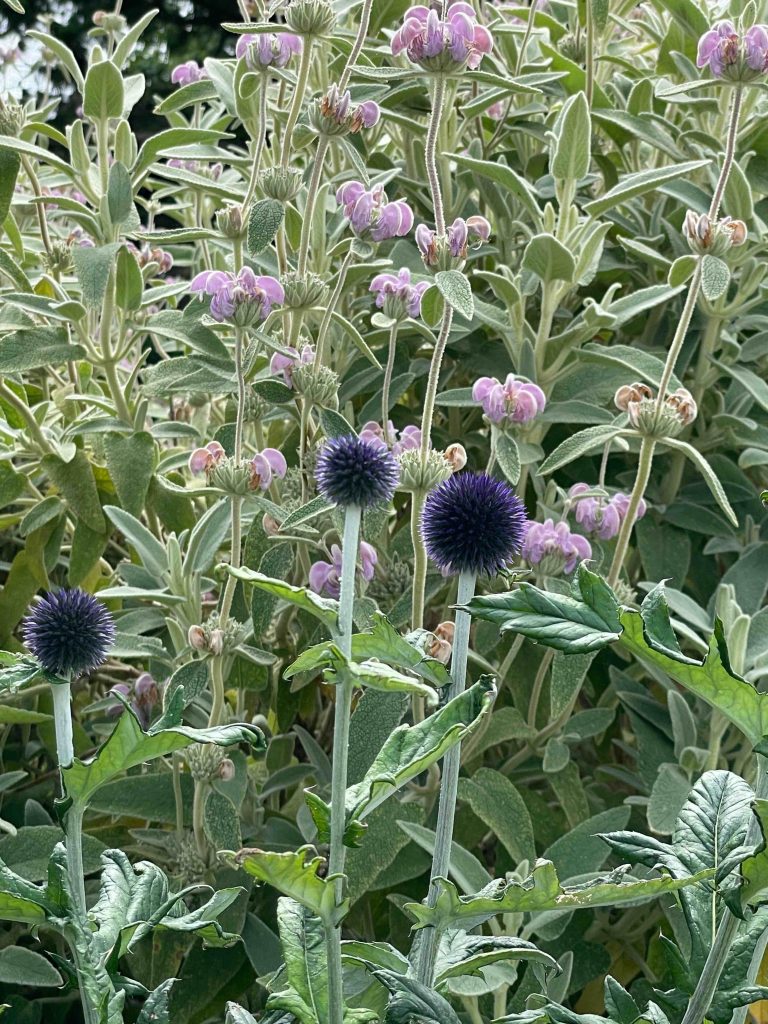
Spiky non-thistles
Acanthus: is a genus of the Acanthaceaefamily.
Acanthus mollisis probably the most widely grown species but it is very vigorous and quite invasive. The flowers of the two species that I grow Acanthus spinosus and Acanthus hungaricus are similar – tall spikes of white flowers with spiny, dusky purple-hooded bracts.
Acanthus spinosus has smaller, spinier leaves than A. mollis and Acanthus hungaricus has even smaller and even spinier leaves. They are wicked to weed amongst but very attractive plants with elegant flower spikes. They will grow in light shade but flower better in full sun.
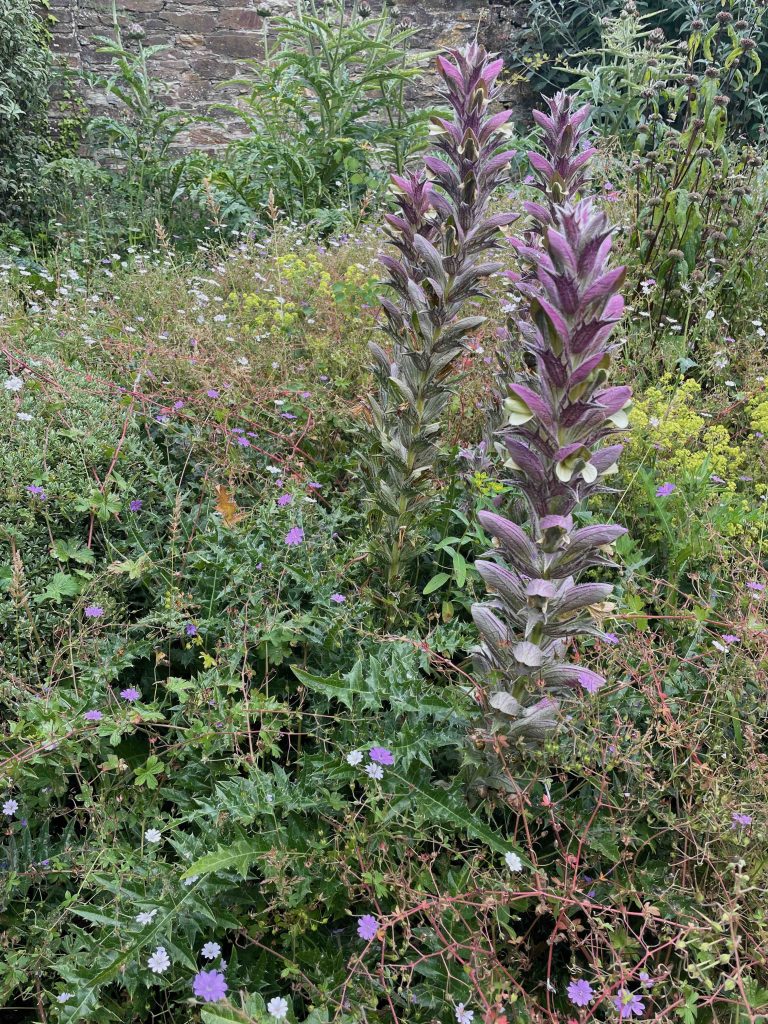
Eryngiums
Eryngiums are members of the Apiaceae – the cow parsley family. Related to our native Eryngium maritimum – the sea holly that you can still find at the back of several sandy beaches in Cornwall. I grow four non-natives and would love to have more. They all have dome-shaped umbels of steely blue or white flowers surrounded by whorls of spiny bracts. The are all much loved by bees too. I think they associate well with both dry plants like lavenders and bearded Iris and also with roses and peonies.
Eryngium gigantium Miss Wilmott’s Ghost – so called because the eponymous Miss Wilmott, an eminent Victorian gardener, so loved this plant that she scattered its seed into other people’s gardens wherever she went.
In late evening light, its large, pale creamy green bracts glow above neat foliage.
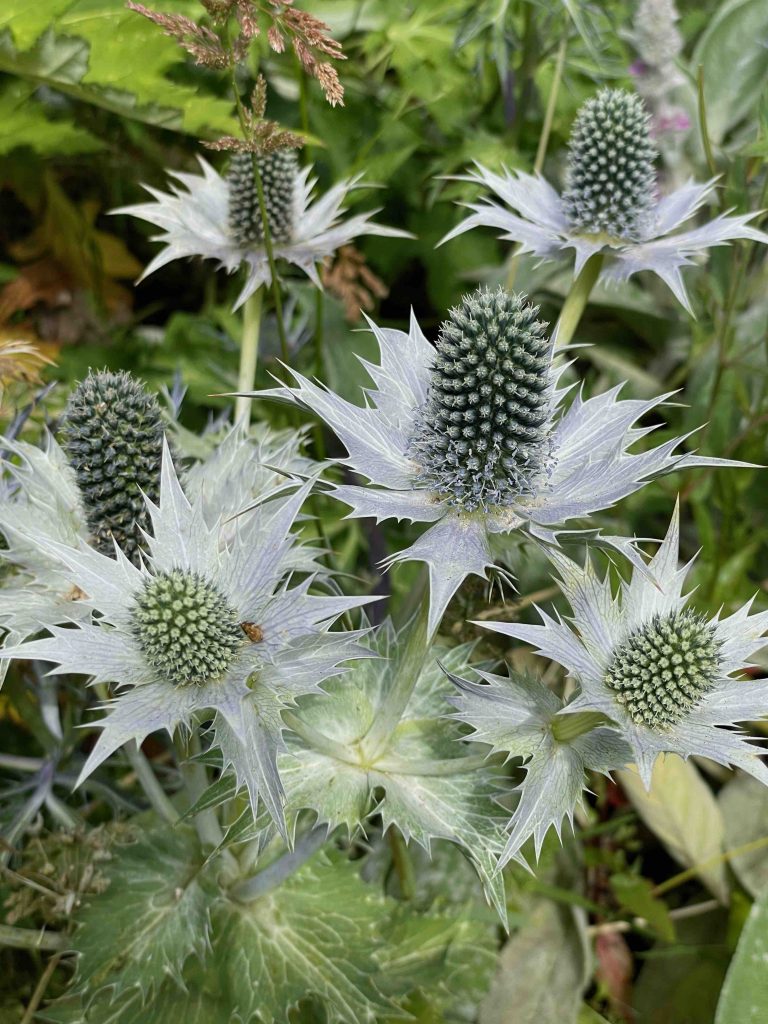
Eryngium bourgatii is much more ornate, with more divided purple blue bracts around a dark mound of small flowers. The whorl of divided palmate basal leaves are attractively variegated white and glaucous green.

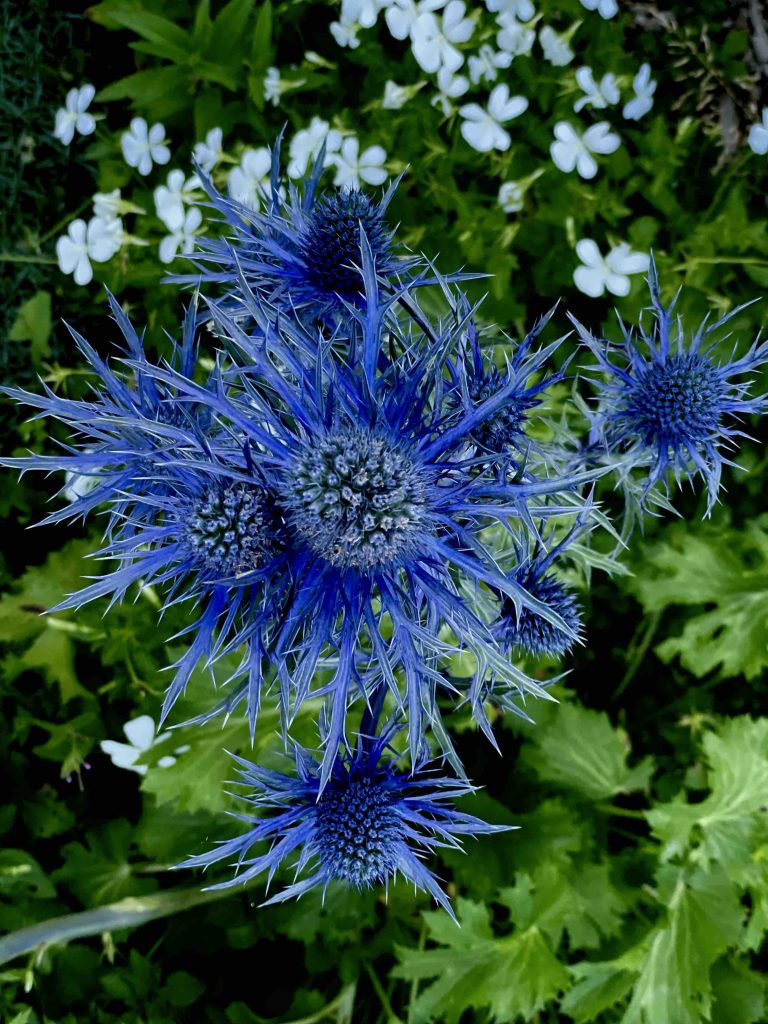
Eryngium x zabelii Big Blue has more ornate bracts in an intense shade of purple blue.
Eryngium planum is taller than the previous two species – growing to about 80 cm with sprays of small steel blue flowers.
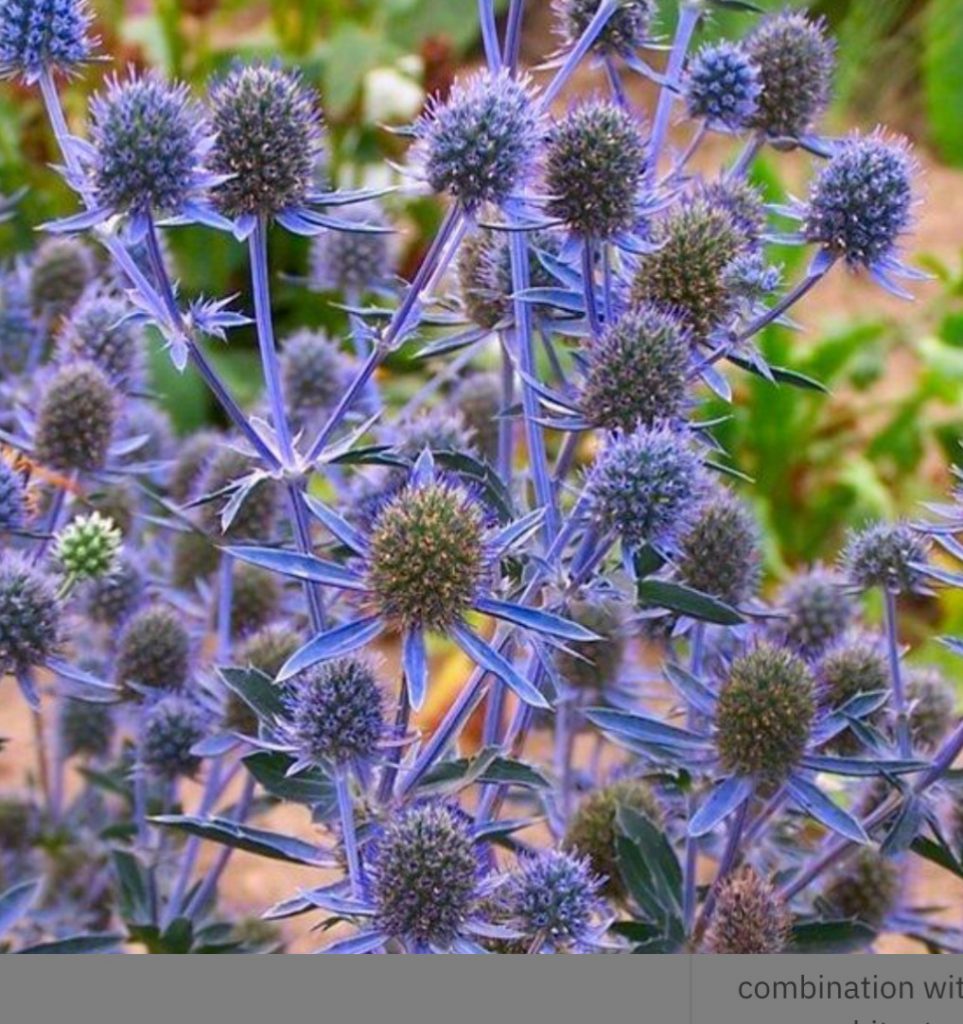
Eryngium alpinum is the most frilly and most desirable of the Eryngiums that I know and for some reason it won’t grow for me here on the Roseland – probably due to winter wet.
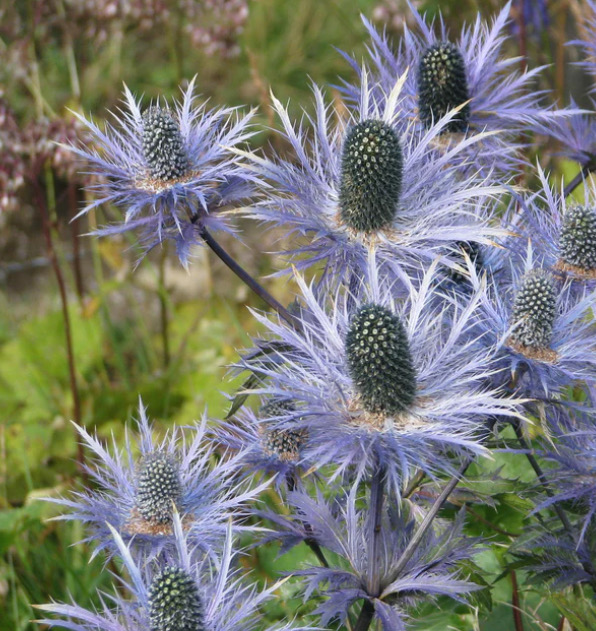
Spiky plants that I most desire:
I fell in love with Puyas when I saw them flowering in the Tresco Abbey Gardens on the Scillies. Huge rosettes of spiky pineapple-like leaves with a central spike of flowers in the weirdest colours, clear chartreuse green, turquoise and navy blue. The huge inflorescences are also ornamented with spikes of bracts protruding from the packed flowers. These look like perches and indeed that is what they are – they allow birds to perch and feed on nectar thereby pollinating the flowers. Starlings, sparrows and several other birds had learned to nectar feed on Tresco – I’d love to see this in my own garden.
Puyasare members of the Bromeliad family from South America. The ones most likely to succeed in Cornwall are from the high Andes, P. berteroniana and P. chilensis but they need both warmth and very sharp drainage to survive and flower here. Sadly I have neither the right setting nor the right conditions to grow these outlandish spiky beauties.

